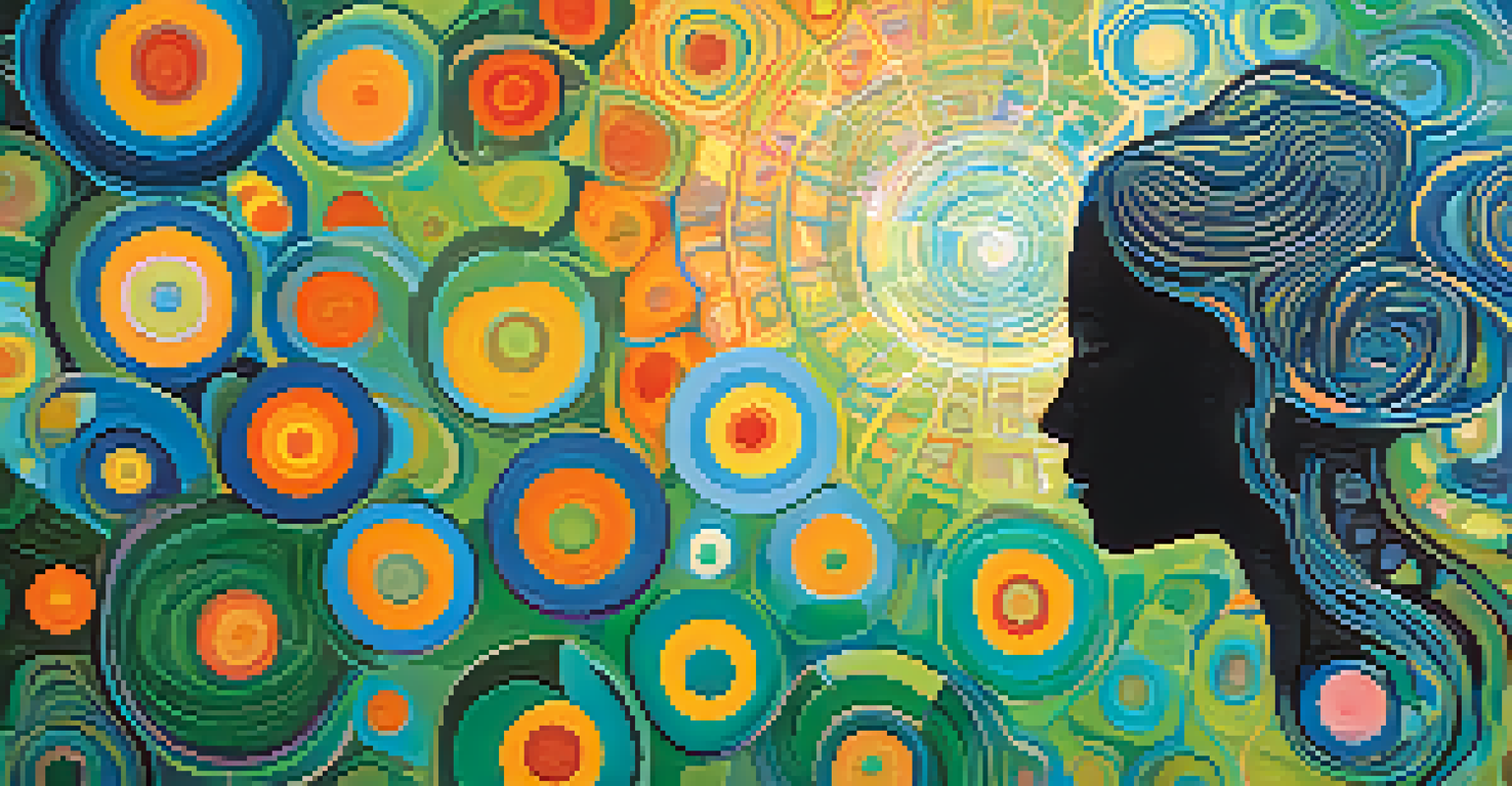The Science of Visualization and Healing

Understanding Visualization: A Mental Practice for Healing
Visualization is the practice of creating mental images to achieve specific goals or outcomes. In the realm of healing, this technique harnesses the power of the mind to foster physical and emotional recovery. By picturing positive outcomes, individuals can influence their overall health and well-being.
The mind is everything. What you think you become.
Research shows that visualization engages the brain's neural pathways, reinforcing connections that promote healing. For instance, athletes often use visualization techniques to enhance performance, which parallels how patients can visualize their recovery. This mental rehearsal can boost confidence and reduce anxiety, making it a powerful tool in the healing process.
Moreover, visualization doesn't just benefit the mind; it can also impact the body. Studies have suggested that visualizing healing can lower stress levels and improve immune function. In essence, when you visualize healing, you're not just dreaming—you're actively participating in your own recovery journey.
The Science Behind Visualization and Its Effects
The science of visualization is rooted in neuroscience, showing how our thoughts can physically affect our bodies. Neuroimaging studies reveal that visualizing an action activates the same brain regions as actually performing that action. This means that when you visualize healing, your brain may actually respond as if healing is occurring.

One prominent study demonstrated that patients who used visualization techniques before surgery experienced less pain and quicker recovery times. This research highlights the tangible benefits of employing visualization strategies in medical settings. By integrating these techniques into treatment plans, healthcare professionals can enhance overall patient outcomes.
Visualization Aids Healing Process
Visualization harnesses the mind's power to foster both physical and emotional recovery by picturing positive outcomes.
Additionally, the placebo effect showcases the power of belief in healing. When patients believe in the effectiveness of their visualization practices, they often experience real improvements. This connection between mind and body underscores the importance of incorporating visualization into holistic health approaches.
Visualization Techniques: How to Get Started
Starting with visualization can be simple and accessible. One effective technique is guided imagery, where individuals are led through a series of mental images that promote relaxation and healing. This can be done through recordings or with the help of a therapist, creating a supportive environment for the practice.
Visualization is daydreaming with a purpose.
Another approach is to use affirmations alongside visualization. By repeating positive statements about health and recovery while visualizing desired outcomes, individuals can reinforce their intentions. This combination can enhance the effectiveness of the visualization process, creating a powerful mindset for healing.
It's also important to create a conducive environment for visualization. Setting aside quiet time, minimizing distractions, and using calming music can help individuals focus and engage deeply with their mental imagery. The more immersive the experience, the more profound the potential effects on healing.
Emotional Healing: Visualization's Role in Mental Wellness
Visualization is not only beneficial for physical healing but also plays a significant role in emotional wellness. By visualizing positive experiences or outcomes, individuals can cultivate resilience and cope with stress. This practice fosters a sense of control and empowerment, which is crucial during challenging times.
For instance, someone dealing with anxiety might visualize themselves in a peaceful setting, experiencing calmness and serenity. This mental escape can provide immediate relief and serve as a coping mechanism. Over time, regular practice can help shift negative thought patterns and promote a more positive outlook.
Science Supports Visualization's Impact
Neuroscience reveals that visualization activates brain regions associated with actual healing, enhancing recovery outcomes.
Moreover, visualization can aid in processing difficult emotions. By visualizing scenarios where one confronts their fears or anxieties, individuals can work through these feelings in a safe mental space. This therapeutic approach can lead to greater emotional clarity and healing.
Real-Life Success Stories: Visualization in Action
There are countless anecdotes of individuals who have harnessed the power of visualization for healing. One notable example is a cancer survivor who used visualization techniques during treatment. By envisioning her body fighting the disease, she reported feeling more empowered and in control, which contributed to her positive outcome.
Another inspiring story comes from an athlete recovering from a serious injury. Through visualization, he imagined himself not only healing but also returning to peak performance. This mental practice complemented his physical rehabilitation, allowing him to regain confidence and achieve his goals faster than expected.
These real-life stories highlight how visualization can transform not just the healing journey but also the mindset surrounding it. They remind us that the mind's power is a valuable ally in overcoming health challenges.
Integrating Visualization into Daily Life for Well-being
To fully benefit from visualization, it's essential to integrate it into daily routines. Setting aside a few minutes each day for visualization can help reinforce its effects over time. Whether it's in the morning or before bed, consistency is key to making this practice a habit.
Creating a visualization journal can also enhance the experience. Individuals can jot down their visualizations, goals, and feelings associated with the practice. This not only tracks progress but also serves as a reminder of the healing journey and the intentions set.
Daily Practice Enhances Benefits
Integrating visualization into daily routines helps reinforce its effects, aiding in overall well-being and emotional resilience.
Lastly, sharing your visualization experiences with others can foster a supportive community. Whether through online forums or local groups, connecting with like-minded individuals can inspire and motivate you to maintain this healing practice.
Potential Challenges and How to Overcome Them
While visualization can be a powerful tool, some individuals may face challenges in adopting this practice. A common hurdle is difficulty in focusing or creating clear mental images. To overcome this, starting with simple, guided visualizations can help ease into the practice and build confidence.
Another challenge is skepticism about the effectiveness of visualization. It's important to approach visualization with an open mind and give it a fair chance. Keeping a journal of experiences and outcomes can provide tangible evidence of its benefits over time.

Lastly, it's crucial to be patient with oneself. Like any skill, visualization takes time to develop. By setting realistic expectations and being gentle with the process, individuals can fully embrace the potential of visualization in their healing journey.